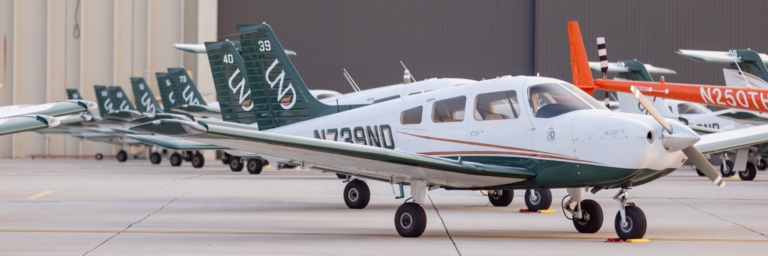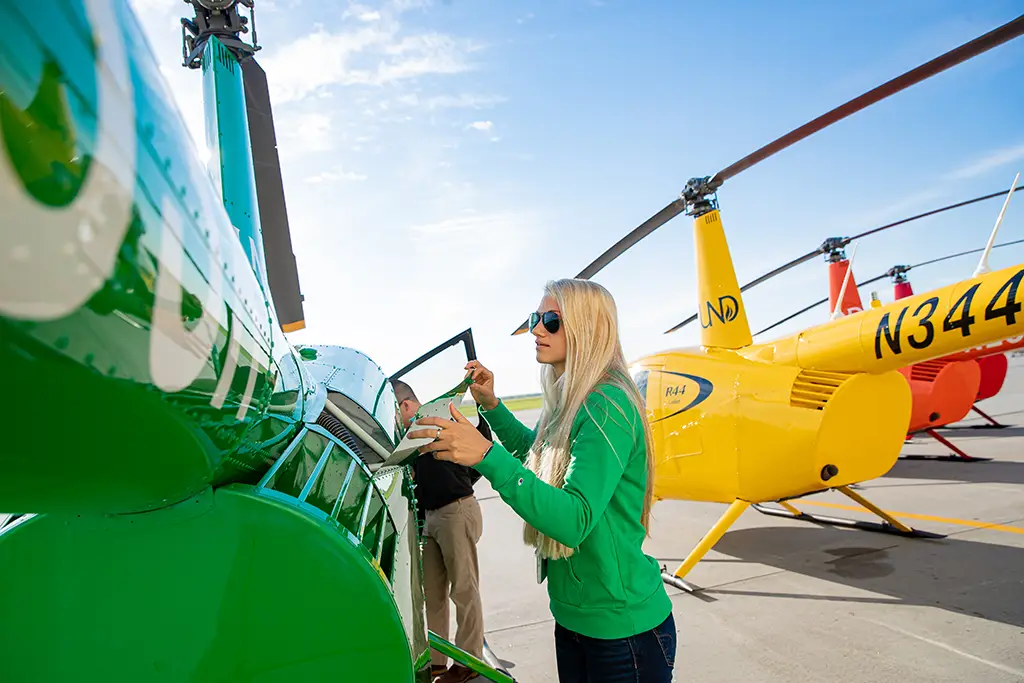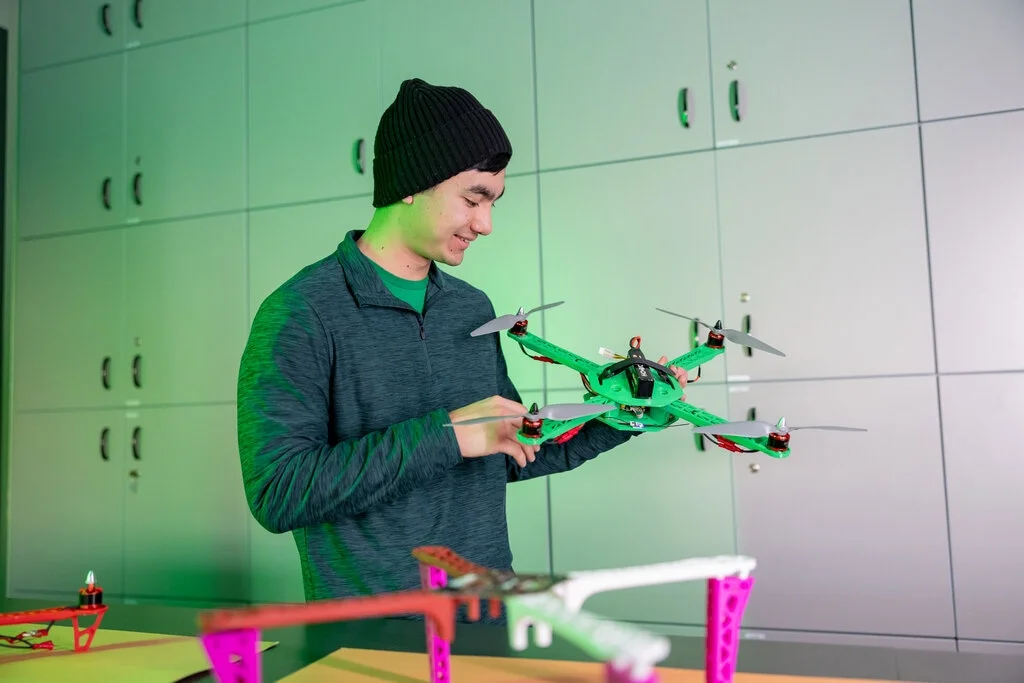
Aeronautical Engineer vs. Aerospace Engineer: A Career Guide
Uncover the exciting world of aeronautical vs. aerospace engineering.
Request Information
This article highlights key differences between the two, from education to career prospects and salaries, guiding you to your dream role in the dynamic and evolving world of engineering.
Growing up, the dream of soaring through the skies often captivates us, with planes and rockets fueling our imagination. For those who hold onto these dreams, a path in aeronautical or aerospace engineering awaits, shaping the future of travel, defense and space exploration.
This article takes you through the intertwined yet distinct paths of aeronautical and aerospace engineering. Discover the unique career opportunities and innovative contributions each field offers in the ever-evolving landscape of engineering.
Understanding Aeronautical and Aerospace Engineering
To fully appreciate the differences and overlaps between aeronautical and aerospace engineering, it's essential first to grasp what each field encompasses. Let's delve into the core of these two disciplines to understand their scope and impact in the world of engineering.
What is Aeronautical Engineering?
Aeronautical engineering is a highly specialized field of engineering focused on the design, development, testing and maintenance of aircraft and their associated systems. This field focuses on various aspects of aircraft, including aerodynamics, propulsion systems, flight control systems and materials used in aircraft construction.
Aeronautical engineers are crucial in ensuring the safety, efficiency and performance of aircraft for both civilian and military applications.
What is Aerospace Engineering?
Aerospace engineering is a much broader field that encompasses both aeronautical engineering and astronautical engineering. While aeronautical engineering deals with aircraft within Earth's atmosphere, aerospace engineering extends beyond the Earth's atmosphere to include spacecraft and space exploration.
Aerospace engineers work on a wide range of projects, including designing and developing airplanes, helicopters, missiles, satellites and spacecraft. They apply principles of physics, mathematics and engineering to create innovative solutions for the challenges of air and space travel.
What is the Difference Between Aerospace and Aeronautical Engineering?
Now, to discern the disparity between aerospace and aeronautical engineering, we'll compare both disciplines across four fundamental domains: education, skills, job responsibilities and work environment. This analysis will facilitate a thorough comparison, allowing us to identify similarities and differences between the two.

Education
In terms of educational paths, both aeronautical engineering and aerospace engineering typically begin with a bachelor's degree, focusing on fundamental principles in mathematics, physics and engineering sciences. Aeronautical engineering programs then delve deeper into specialized coursework related to aircraft design, aerodynamics, propulsion systems and materials science. This undergraduate education equips students with the foundational knowledge and skills necessary to pursue entry-level positions in the aerospace industry.
On the other hand, aerospace engineering programs cover a broader spectrum of topics, incorporating coursework related to both aircraft and spacecraft design. In addition to aerodynamics and propulsion, aerospace engineering students study orbital mechanics, space systems engineering, satellite design and space mission planning. This comprehensive curriculum prepares graduates to work in diverse fields within the aerospace sector, including commercial aviation, defense, space exploration and satellite technology.
Upon completing their bachelor's degree, aspiring engineers in both disciplines may choose to pursue advanced education through graduate programs. Master's degrees in aeronautical or aerospace engineering offer opportunities for specialization in specific areas of interest, such as advanced aerodynamics, propulsion technologies or spacecraft systems.
For those seeking leadership roles or advanced research positions, a Ph.D. in engineering provides in-depth knowledge and expertise, often leading to careers in academia, research institutions or high-level industry positions.
Skills
Both aerospace and aeronautical engineers need a similar set of core skills, including proficiency in mathematics, physics and engineering principles. However, there are some specific skills that may be more emphasized in each field.
Aeronautical Engineering Skills
- Proficiency in aerodynamics
- Mastery of aircraft propulsion system design
- Expertise in aircraft structural design
- Understanding of flight dynamics and control
- Knowledge of aircraft materials and manufacturing processes
- Strong problem-solving abilities
- Effective communication skills
- Attention to detail
Aerospace Engineering Skills
- Proficiency in orbital mechanics
- Mastery of spacecraft propulsion systems
- Expertise in spacecraft structural design
- Understanding of space mission design and planning
- Knowledge of satellite systems and communication
- Analytical thinking
- Teamwork and collaboration
- Adaptability to changing environments
Job Responsibilities
Although there is some overlap in the job responsibilities of these two engineering roles because both typically deal with designing, developing and testing various aircraft, their specific job responsibilities may vary based on the industry and project requirements.
Aeronautical Engineering Responsibilities
- Designing and analyzing aircraft components
- Developing aerodynamic models and simulations
- Testing and evaluating aircraft performance
- Ensuring compliance with aviation regulations
- Collaborating with multidisciplinary teams on aircraft projects
Aerospace Engineering Responsibilities
- Designing and analyzing spacecraft and satellite systems
- Conducting orbital trajectory calculations and simulations
- Testing and evaluating spacecraft performance in space environments
- Developing systems for space exploration missions
- Collaborating with scientists, astronauts and engineers from various disciplines
Work Environment
Aeronautical and aerospace engineers often work in similar environments, such as aerospace manufacturing companies, government agencies, research institutions and defense contractors. They may spend time in office settings conducting design and analysis work, as well as in laboratories and testing facilities for experimentation and validation. Additionally, they may participate in field tests and site visits to assess aircraft or spacecraft performance.
The work environment can vary depending on the specific project and industry sector but generally involves collaboration with multidisciplinary teams to achieve project goals and objectives.
Aeronautical Engineering vs. Aerospace Engineering: Salary Expectations
Both aeronautical and aerospace engineers enjoy lucrative salary prospects. However, the figures can fluctuate significantly depending on factors such as location, level of education, years of experience and the specific employer.

Aeronautical Engineer Salary
Aeronautical engineers command competitive salaries, with an average annual pay of $130,258. However, it's essential to note that this figure can vary considerably, ranging from $49,000 to $205,000 per year based on the aforementioned factors.
Aerospace Engineer Salary
On the other hand, aerospace engineers also enjoy lucrative salaries, albeit slightly lower than those of aeronautical engineers. The average annual pay for aerospace engineers stands at $108,638, with salaries typically ranging from $42,000 to $165,000 per year.
Aeronautical Engineering vs. Aerospace Engineering: Which Career is Right for You?
Both aeronautical and aerospace engineering offer exciting career prospects and ample opportunities for professional growth. Ultimately, the choice between the two boils down to personal preferences, interests and career aspirations.
If you're passionate about aircraft design, flight dynamics and propulsion systems, a career as an aeronautical engineer may be the perfect fit. Conversely, if you're drawn to spacecraft design, satellite systems and orbital mechanics, pursuing a path as an aerospace engineer might align more closely with your interests.
Take the time to explore the intricacies of each field, assessing not only your technical skills but also your personal passions and long-term career objectives. By aligning these factors with your aspirations, you can embark on a fulfilling journey in either aeronautical or aerospace engineering, shaping the future of aviation and space travel.
Conclusion
All in all, both aerospace and aeronautical engineering play crucial roles in advancing modern technology and exploration, shaping the future of air and space travel. While these disciplines share a profound connection in their pursuit of flight and exploration, they also diverge in their specific focuses and applications.
The key is to understand their similarities and differences, as this knowledge allows you to make informed decisions as well as empowers you to pursue opportunities that resonate with your passions, ensuring a fulfilling and rewarding journey in the field of engineering.
Whenever you're ready to begin your journey into the field of flight and innovation, explore UND's Aerospace Engineering bachelor's degree program. Together, we can make your engineering dreams take flight and soar to new heights.
FAQs
The "better" choice between aerospace and aeronautical engineering is subjective, varying with individual career goals and interests in either space exploration or aviation.
On average, aeronautical engineering tends to yield slightly higher salaries than aerospace engineering, but both fields offer competitive compensation and promising career prospects.
While aeronautical engineers are involved in the design and development of aircraft, their roles typically do not involve piloting planes.
Yes, aeronautical engineers can transition into aerospace engineering roles with additional training and experience, leveraging their expertise in aircraft design and engineering principles.
The aircraft and parts manufacturing industry is the primary employer of aerospace engineers, offering numerous opportunities for career growth and advancement in the field.
Aeronautical engineering programs typically span four years for a bachelor's degree, providing students with a comprehensive understanding of aircraft design, aerodynamics and propulsion systems.
In North Dakota, aerospace engineers earn an average annual salary of $103,520, while in Minnesota, the average salary is slightly lower at $97,100 per year.